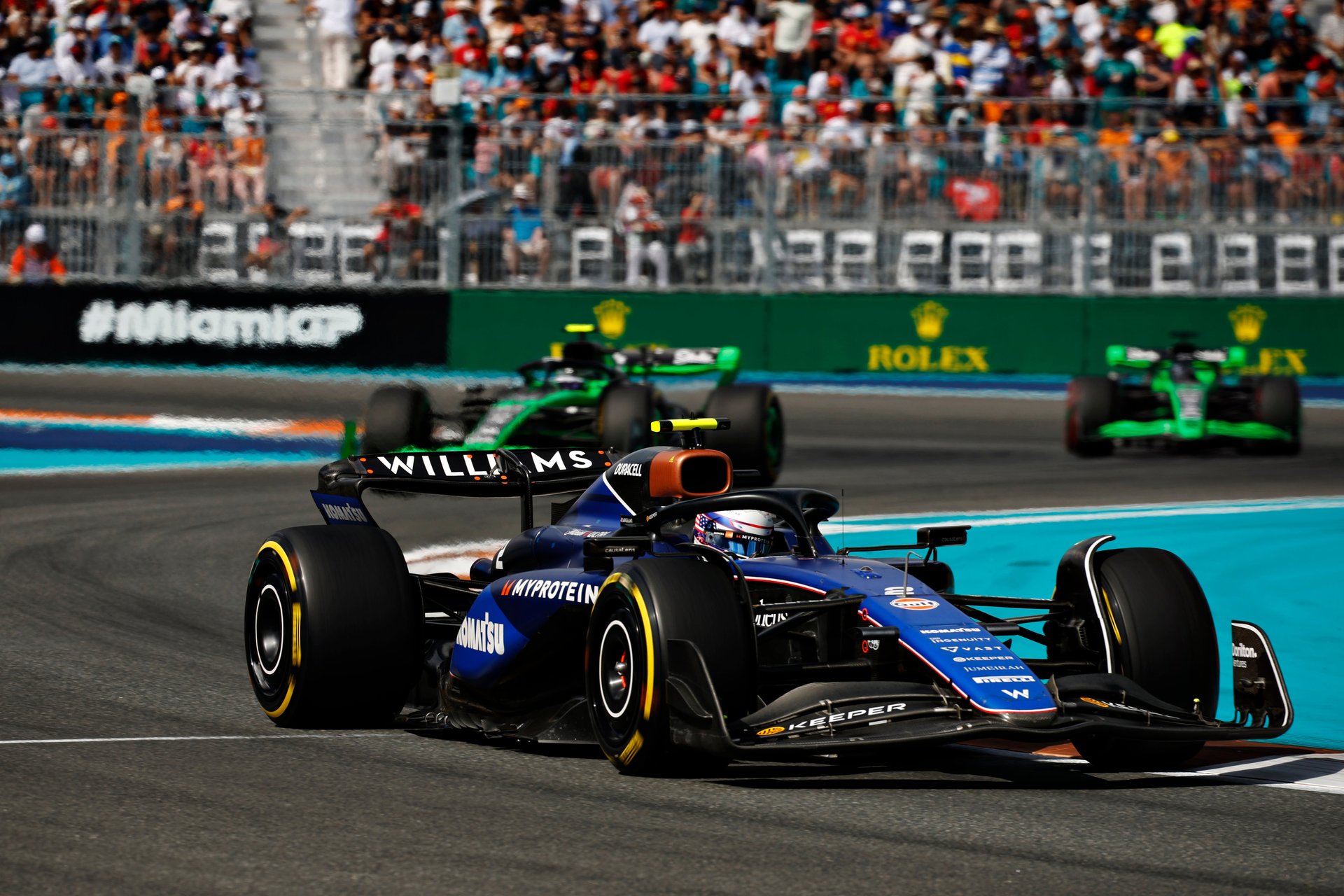How AI is changing the world of competitive car racing
Lap of Legends is the "first ever real vs. virtual race" between a current F1 driver and AI-generated avatars of former world champions

The Silverstone motor racing circuit in England is familiar with a chance of rain and the world’s fastest drivers — but for the first time, the track will become the site of a car race between man and artificial intelligence.
Suggested Reading
Michelob ULTRA Lap of Legends, which premieres Tuesday at 10pm ET in the U.S., is the “first ever real vs. virtual race” between current Williams Racing driver Logan Sargeant, and AI-generated avatars and cars of six former Williams world champion drivers: Mario Andretti, Nigel Mansell, Alain Prost, Damon Hill, Jacques Villeneuve, and Jenson Button.
Related Content
“When working with our partners at Williams Racing to uncover how we could elevate the partnership, we were captivated by the possibility of using technology to bring the team’s rich history of legendary drivers back to the track to compete against the team’s current driver, Logan Sargeant,” Ricardo Marques, vice president of marketing at Michelob ULTRA, said in an email interview with Quartz. He added that the idea for the race was inspired by the company’s previous brand campaigns combining technology with its major sports partners.
Sargeant, who is racing in his second year of Formula 1 and is the only driver from the U.S., was chosen to participate in Lap of Legends because “we thought this would be the perfect opportunity for him to learn directly from his heroes and remind him to enjoy the ride in order to succeed out on the track,” Marques said (and he could use it — Sargeant and Williams are near the bottom of the driver and team standings so far this season). Sargeant’s current teammate, Alex Albon, will serve as Sargeant’s “race engineer,” offering him guidance and support throughout the virtual event.
What’s AI got to do with it?
Development of the AI technology used in the race began a year ago in the Michelob ULTRA Innovation Lab. Each AI-generated driver and car was created to perform exactly like the real-life driver and car they represent based on over 1,000 hours of racing footage. However, none of the previous cars spanning from 1978 to 2009 are a match for Sargeant’s modern day Formula 1 car, which has benefited from years of technological and engineering advancements. Therefore, some aspects of the real and virtual cars were adjusted to ensure the race was competitive. For example, the drag reduction system (DRS), a flap on the rear wing of a Formula 1 car the driver can open to make their car go faster, was disabled on Sargeant’s car, and cars from the past were fitted with modern day tire compounds.
To see the virtual drivers and cars alongside him on the track, Sargeant wore a one-of-a-kind racing helmet fitted with an augmented reality visor, designed by Adam Smith, experience technology director at The Mill, the production company behind Lap of Legends. The helmet also included a race-grade GPS which shared data from the helmet with the Innovation Lab’s system, so his car’s location could be tracked at all times down to the centimeter. The GPS also allowed both Sargeant and the virtual racers to know each other’s positions and react to everything on the track, as the AI generated drivers were not pre-programed to drive the best racing line possible.
“This helmet is really a window into a virtual world,” Smith said in a Lap of Legends preview shared with Quartz.
The AI-generated drivers were tested on a racing simulator developed specifically for the Lap of Legends race.
“You wanted to go back, a long way in time and create a model of cars that were 20, 30, 40 years ago, you wanted to use AI to really recreate all the other drivers on the grid, so that we can practice racing,” Andrew Newton, simulator team leader at Williams, said in the preview.
What does this mean for the future of Formula 1?
Nigel Mansell, the Formula 1 world champion in 1992, was included in Lap of Legends as a virtual driver, and said he was “amazed” the first time he saw the AI version of himself.
“It’s something completely new,” Mansell said about the virtual race in an interview with Quartz. “I mean, putting five or six world champions together is very dangerous anyway.”
Mansell, who said it was “incredibly special” to see Sargeant race against himself and the other past world champions, added that he and the other former drivers who witnessed the race in-person, “all kept saying, ‘Well, how’s this going to work?’”
“The technology, I think everybody looked at it and thought, ‘This is quite phenomenal and incredibly cutting edge,’” he said.
AI and other modern technologies “might be the biggest single factor that might make all the teams more competitive and closer to one another,” Mansell said because the amount of information AI can provide teams about their cars and drivers “is just going to be extraordinary.”
But despite his enthusiasm for AI in Formula 1, Mansell said the sport and other industries have to be careful with how many people the technology could put out of work. The technology is already being used by some teams for certain tasks, he said.
“While used correctly, AI could make the world a far safer place and more exciting place to enjoy one’s life, which is very positive and fantastic,” Mansell said.